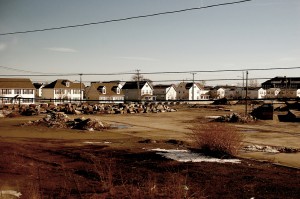
With a new state law, Connecticut municipalities won the right to set up land bank authorities to acquire and assemble properties, including the power to bring an action to quiet title to real property.
It was only the latest attempt to deal with the problem of idling properties in Connecticut; last year, the state General Assembly approved a pilot program in New London allowing the city to tax undeveloped land at a higher rate, with the goal of prodding owners into building out or selling the parcels. In the recently concluded session, there was no effort to expand the bill to other cities like Bridgeport, Norwalk and Stamford that similarly have lots of land awaiting development.
Connecticut has an existing land bank and land trust program on the books that dates to 1987, and which is administered by the state Department of Economic and Community Development. That law reserves grants and loans for developers of housing for lower income families and is limited to nonprofits and cooperatives.
The Connecticut Conference of Municipalities supported the newest bill awarding expanded powers, saying it would promote sound land practices and help cities and towns as they grapple with the foreclosure crisis.
“Abandoned ”¦ and foreclosed properties are increasingly dominating neighborhoods and communities across Connecticut,” said Frank Alexander, general counsel for the Center for Community Progress, in testimony on the bill last spring. “Each parcel of vacant and abandoned property no longer yields property tax revenues; each parcel drives down the neighboring property values.”
The New York State Assembly passed similar legislation in mid-June based on a land bank created in 1999 to cover the Flint, Mich., area. Since its inception, the Genesee County Land Bank says it has put properties back on the tax rolls that have generated an additional $10 million in municipal revenue. While 2010 sales reached nearly 425 properties for a total of $2.5 million, its current inventory numbers about 6,500 properties ”“ nearly 4,000 are vacant lots in heavily abandoned areas of Flint and Beecher and nearly 300 abandoned commercial and industrial properties.
The New York bill is designed to allow cities and counties across the state to develop land banks, which would be tasked with converting vacant, abandoned or tax-delinquent properties into productive use. Those properties could be redeveloped or resold in order to better balance the supply of buildings with the local demand for them. The land banks would operate under the New York State Urban Development Corp.
“The volume of available housing stock in western New York has simply overwhelmed our ability to manage it,” said Buffalo Assemblyman Sam Hoyt, in a prepared statement. “It”™s time to get a handle on the inventory that exists and start imagining ways to creatively reuse and redevelop that space. A network of land banks gives us the mechanism for doing exactly that.”
In Syracuse alone, officials count about 1,800 vacant properties.
“New York has long needed to address the reckless real estate speculation that is an unintended byproduct of the tax foreclosure process, frequently putting property in the hands of neglectful owners who have little interest in redeveloping or even maintaining the property they purchase,” stated Peter Baynes, executive director of the New York Conference of Mayors. “Land banks have proven to be an integral tool in not only halting this harmful practice, but actually reversing the decades-long trend of property neglect, vacancy and abandonment.”
















